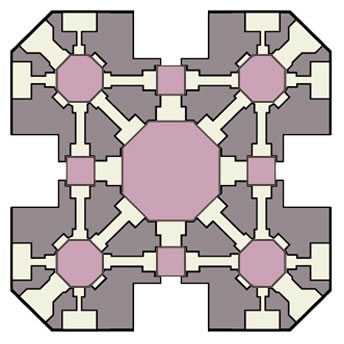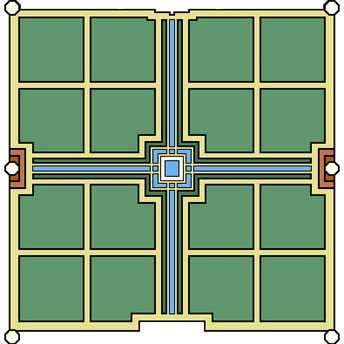skip to main |
skip to sidebar
 Arabic inscriptions in black marble are used to decorate both the south gateway and main mausoleum. The black marble lettering is inlaid into white marble scroll-like borders that frame the architectural features. Sweeping letters and a strong emphasis on horizontal and vertical strokes create an almost grid-like effect in places.
Arabic inscriptions in black marble are used to decorate both the south gateway and main mausoleum. The black marble lettering is inlaid into white marble scroll-like borders that frame the architectural features. Sweeping letters and a strong emphasis on horizontal and vertical strokes create an almost grid-like effect in places. The text is written in the 'thuluth' script, in a style associated particularly with the Persian calligrapher, Amanat Khan, who was resident at the Mughal court. (His signature appears in colophons within the marble inscriptions).
The text is written in the 'thuluth' script, in a style associated particularly with the Persian calligrapher, Amanat Khan, who was resident at the Mughal court. (His signature appears in colophons within the marble inscriptions). Recent historian Wayne Begley suggests that Amanat Khan was responsible not only for the design of the script but also for the choice of text. The majority of the text is taken from the Qur'an. There are twenty two passages in all, including fourteen whole chapters, some of which are read out as part of the Islamic funeral ceremony itself.
Recent historian Wayne Begley suggests that Amanat Khan was responsible not only for the design of the script but also for the choice of text. The majority of the text is taken from the Qur'an. There are twenty two passages in all, including fourteen whole chapters, some of which are read out as part of the Islamic funeral ceremony itself. The texts chosen refer broadly to themes of judgment and paradisical rewards for the faithful. The inscription over the gateway invites the reader to enter Paradise, the abode of the faithful and reward for the righteous.
The texts chosen refer broadly to themes of judgment and paradisical rewards for the faithful. The inscription over the gateway invites the reader to enter Paradise, the abode of the faithful and reward for the righteous. As one approaches the mausoleum itself, the mood changes. The inscriptions on the exterior walls of the tomb leave one in no doubt about the impending doom that awaits unbelievers on the Day of Judgments.
As one approaches the mausoleum itself, the mood changes. The inscriptions on the exterior walls of the tomb leave one in no doubt about the impending doom that awaits unbelievers on the Day of Judgments.  Inside the mausoleum, the tone is more reassuring in places, with lengthy descriptions of Paradise adorning some of the walls.
Inside the mausoleum, the tone is more reassuring in places, with lengthy descriptions of Paradise adorning some of the walls.  The central focus is provided by passages on the upper cenotaph of Mumtaz Mahal. The words of the Qur'anic prayer, recited by angels, implore Allah to allow the faithful to enter Paradise,
The central focus is provided by passages on the upper cenotaph of Mumtaz Mahal. The words of the Qur'anic prayer, recited by angels, implore Allah to allow the faithful to enter Paradise,
a touching request for God's mercy towards his devout servant, Mumtaz Mahal.
 The huge bulbous dome of the Taj Mahal reaches a grand height of 144 feet [forty four meters] and is one of the major focal points of the building. Situated on the flat roof of the building it dominates the yawning arches, or iwans of the four façades. The dome is placed on a truncated drum to retain volume, and is a regular feature of Mughal architecture and locates the exact centre of the building.
The huge bulbous dome of the Taj Mahal reaches a grand height of 144 feet [forty four meters] and is one of the major focal points of the building. Situated on the flat roof of the building it dominates the yawning arches, or iwans of the four façades. The dome is placed on a truncated drum to retain volume, and is a regular feature of Mughal architecture and locates the exact centre of the building. Geometry plays an important role in the overall designs of Mughal architecture, and the play of shape in the Taj Mahal is optimal. The ground plans of the main chamber and the base of the minarets use an octagonal template,
Geometry plays an important role in the overall designs of Mughal architecture, and the play of shape in the Taj Mahal is optimal. The ground plans of the main chamber and the base of the minarets use an octagonal template, the right angles of the plinth and gardens engage the use of the square and the water channels are rectangular.
the right angles of the plinth and gardens engage the use of the square and the water channels are rectangular. Subsequently, it is the dome, which brings cylindrical perfection to the site, and the circle, symbolizes perfection and unity.
Subsequently, it is the dome, which brings cylindrical perfection to the site, and the circle, symbolizes perfection and unity. The Taj Mahal in fact boasts a double-dome, a false ceiling inside a large outer-skin. This device gives the imposing volume to the outside of the dome, whilst retaining comfortable proportions in the inside - which would otherwise be cavernous.
The Taj Mahal in fact boasts a double-dome, a false ceiling inside a large outer-skin. This device gives the imposing volume to the outside of the dome, whilst retaining comfortable proportions in the inside - which would otherwise be cavernous. It is a technique used by Sir Christopher Wren in the dome of St Paul's Cathedral, London.
It is a technique used by Sir Christopher Wren in the dome of St Paul's Cathedral, London. Flanking the exterior are four domed kiosks or chhatris which add symmetry and verticality.
Flanking the exterior are four domed kiosks or chhatris which add symmetry and verticality. Ornamenting the summit of the dome is an open lotus, this acts as a visual anchor to the bulk of the dome underneath. The lotus nests under a gilded finial. Surrounding the drum of the dome is a dazzling necklace of bejeweled inlay. This is a startling example of how the decoration and architecture are used to compliment each other.
Ornamenting the summit of the dome is an open lotus, this acts as a visual anchor to the bulk of the dome underneath. The lotus nests under a gilded finial. Surrounding the drum of the dome is a dazzling necklace of bejeweled inlay. This is a startling example of how the decoration and architecture are used to compliment each other.


















